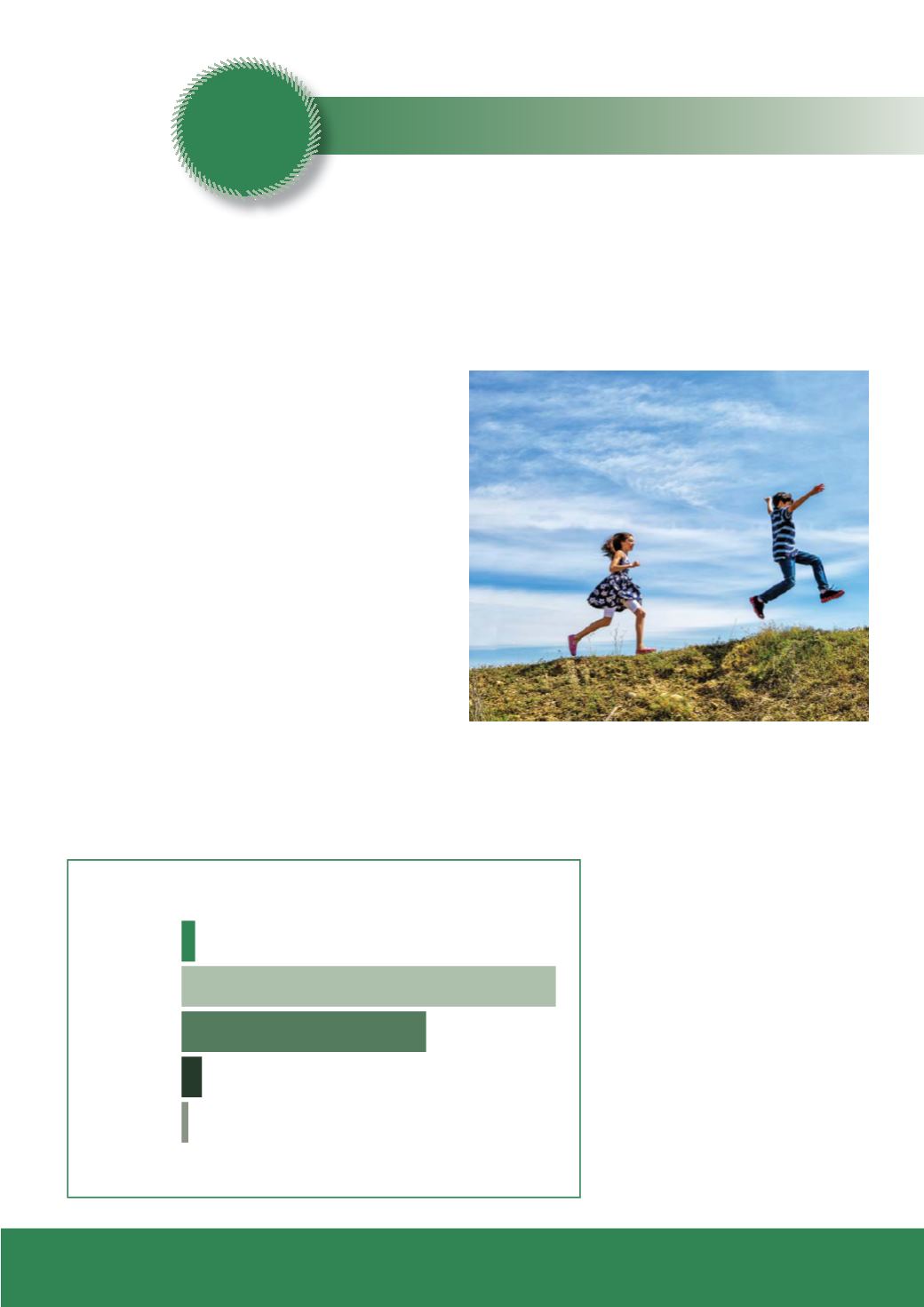
29
Chapter
Chapter 3: Tackling physical inactivity
ISSUES: Fitness & Health
Tackling physical inactivity
3
Physical literacy – the vaccine against the
inactivity crisis
By Dean Horridge
P
hysical literacy is seen as a “vaccine” against the
inactivity crisis. If this is the case, why do we have so
many children leaving primary school not physically
literate?
Physical literacy refers to movement competency; how well
can children run, skip, hop, jump, throw and catch. It also
refers to motivation and confidence. The better children
are at these skills, the more confident they become and the
more motivated they are to keep on participating or even try
something new. They will also look for opportunities to be
active if we allow them to!
Formany yearswehavebeendisengaging childrenbymaking
them play sport before they have learnt the fundamental
movement skills. It’s time to change and develop children’s
skills and confidence to be physically active. Engaging
children in fun activity to get themmoving from a young age
will keep them motivated and will embed healthy and active
habits for life.
It does not need to be over complicated and it is not hard
to achieve, we need to keep it simple. We must commit to
supporting children to achieve the Chief Medical Officer
recommended guidelines of 60 minutes activity a day for
every child both in and out of school. If we can embed that
into schools and communities across the UK, we can tackle
the inactivity crisis and obesity epidemic.
Last year, our challenging children’s
inactivity report highlighted that 67% of
children did not have adequate fitness
levels for their age. This needs to change
and we have an opportunity to make a
difference. Let’s start today.
For tips and advice to get the whole
family moving in ways that can be
incorporated into your everyday routine,
visit
26 April 2016
Ö
The above information is reprinted
with kind permission from Fit For Sport.
Please visit
for
further information.
© 2017 Fit For Sport Ltd.
How much do you think about your health?
I’m obsessed
with it
I pay a lot
of attention to it
I don’t think
about it much
I hardly ever
think about it
Other
Source: YouGov, 2016
2%
58%
36%
3%
1%


